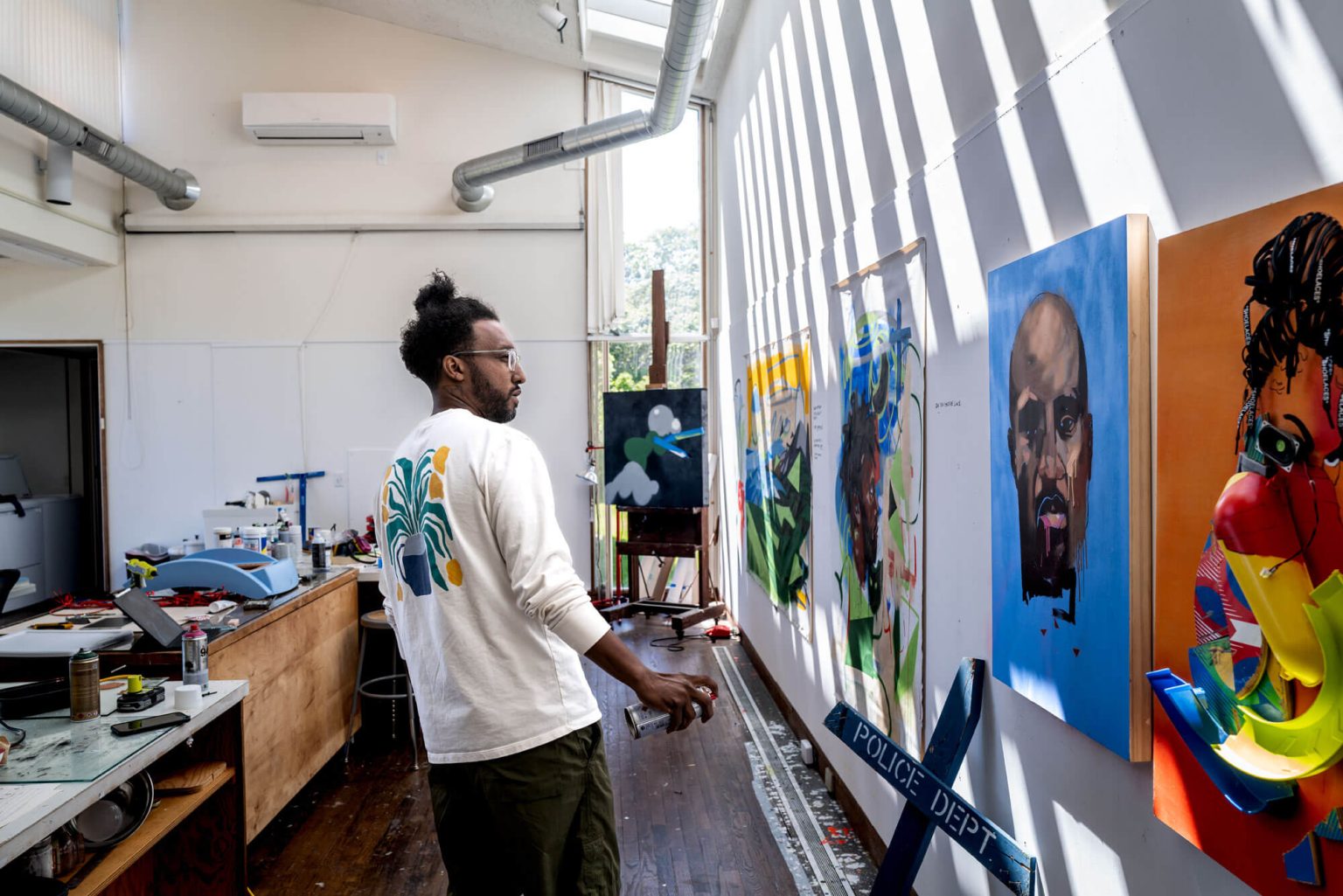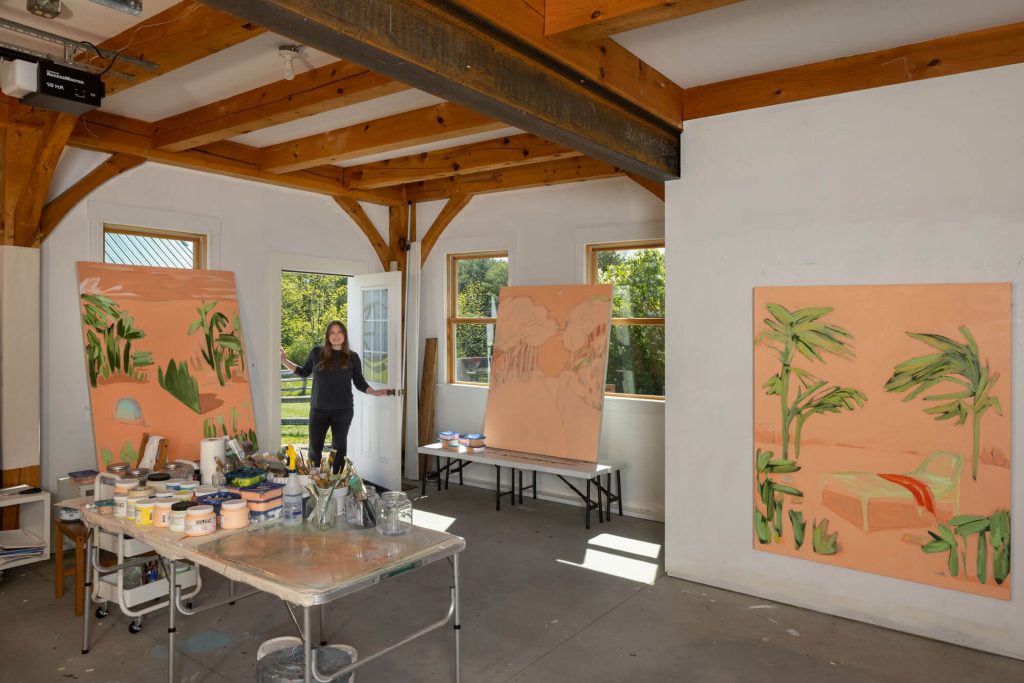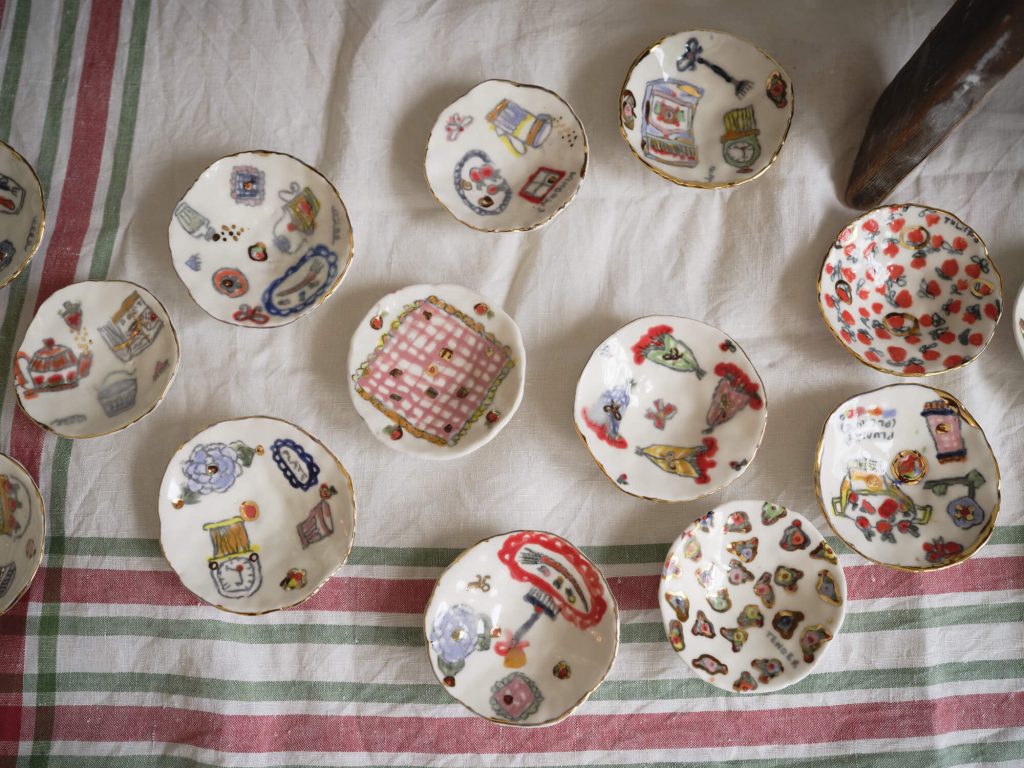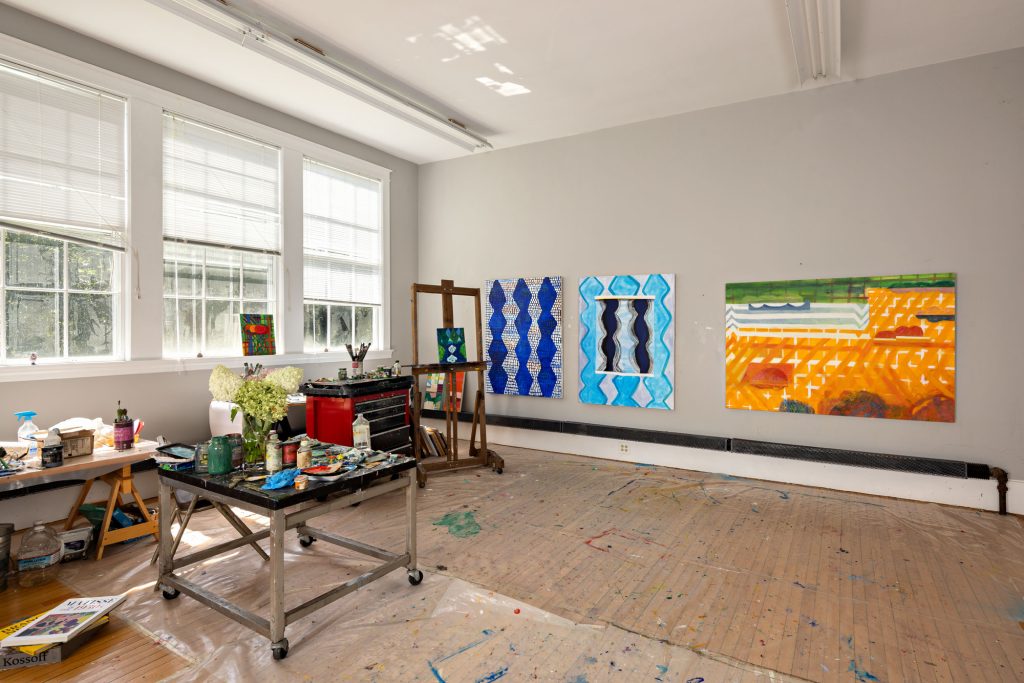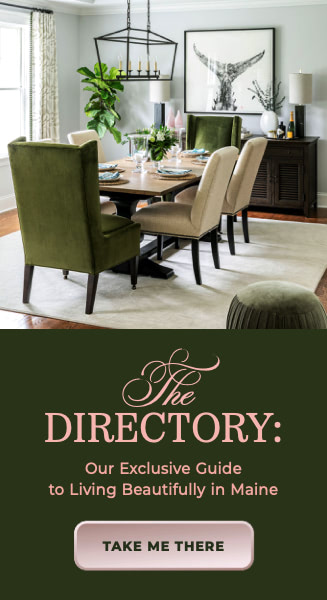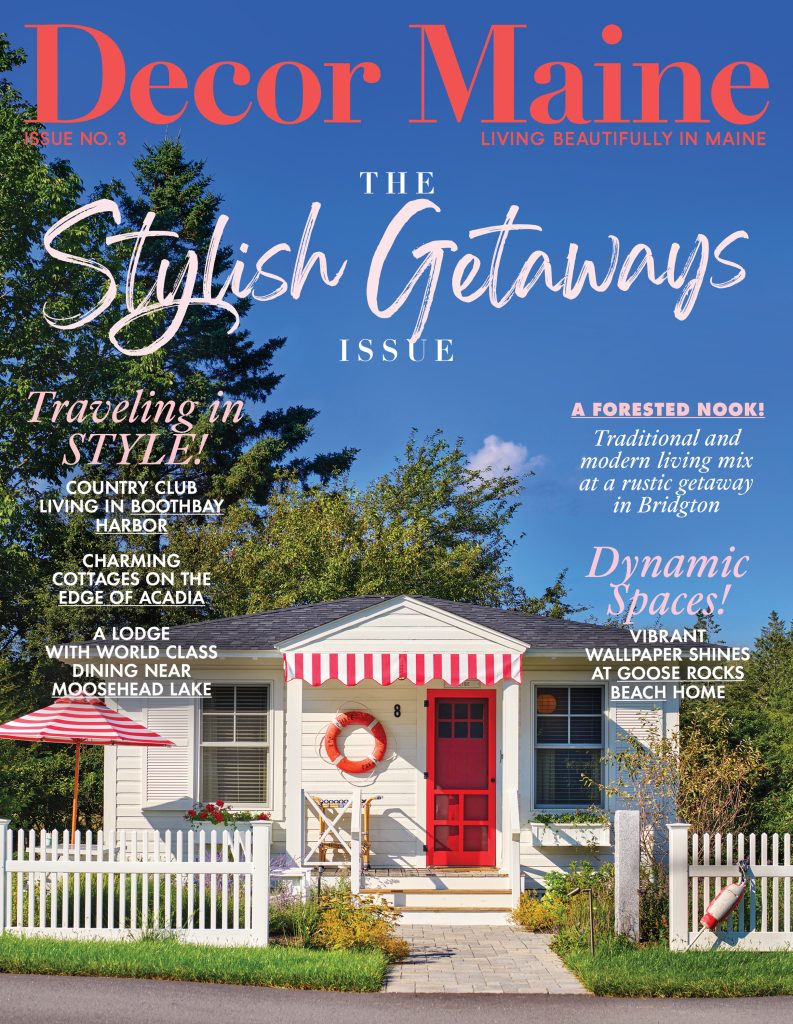At a remote-seeming and windswept spot at the end of a long and winding road, nestled between York beach and the Rachel Carson National Wildlife Preserve, stands Surf Point Foundation. An artist-endowed residency located in the former home of the late artist Beverly Hallam and arts-patron Mary-Leigh Call Smart, its mission is to provide visual artists and art professionals from Maine and across the U.S. the space and time to rest, recharge, and create.
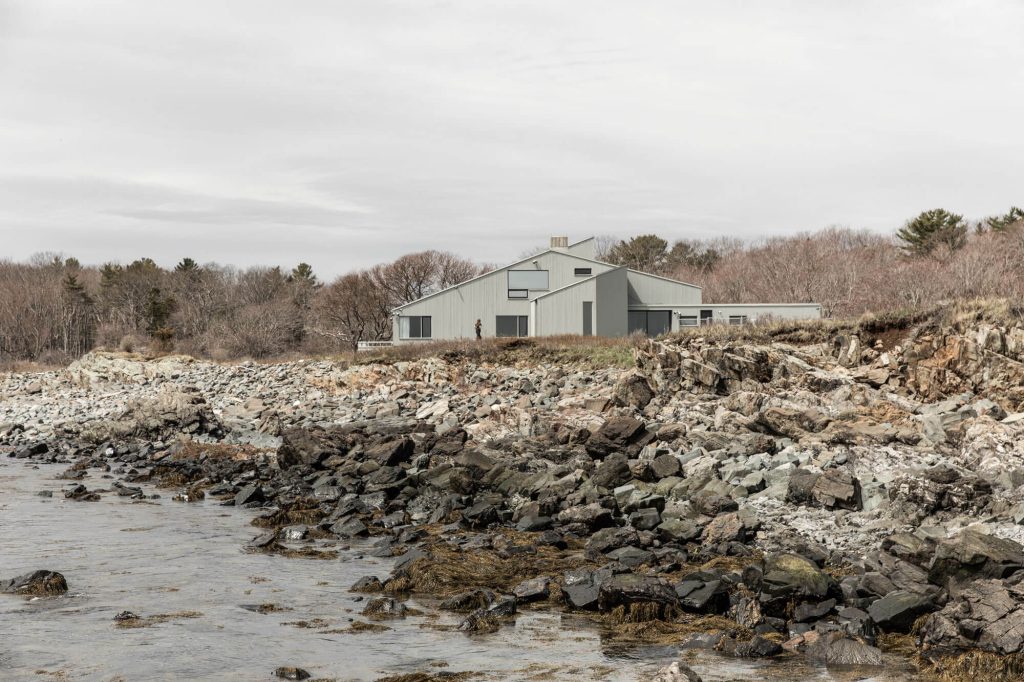
The foundation’s heart is the 6,000-square-foot home built by Carter and Woodruff in 1971 for Beverly and Mary-Leigh, which now contains four live-and-work spaces for residents. Executive director Yael Reinharz explains how, after marriages, careers, and widowhood, the women shared the home, hosted salons, and planned the residency that would launch upon their passing, the very essence of paying it forward. “Mary-Leigh was the person of wealth and means, Beverly was the artist. They had a very symbiotic relationship in which Mary-Leigh was the collector/philanthropist, a student of art; and Beverly was a teacher and practitioner of art. Together the two of them had a wonderful learning relationship.”
The modernist, cedar-clad building sports a series of peaked gables, angles that resemble both the rocky coast and the white caps that crash upon them. “This space was created for and by artists, so it lends itself immediately to the kinds of feelings that people want to have when they’re thinking about creativity,” Yael remarks, gesturing to the high ceilings that accommodate tall sculptures and leave ample space for large paintings. The simple, somewhat spare accommodations ensure that each resident has a mutable workspace and a private room. A communal dining area encourages the residents to meet for meals, while the library, stocked with art books and literature, is often supplemented by residents themselves.
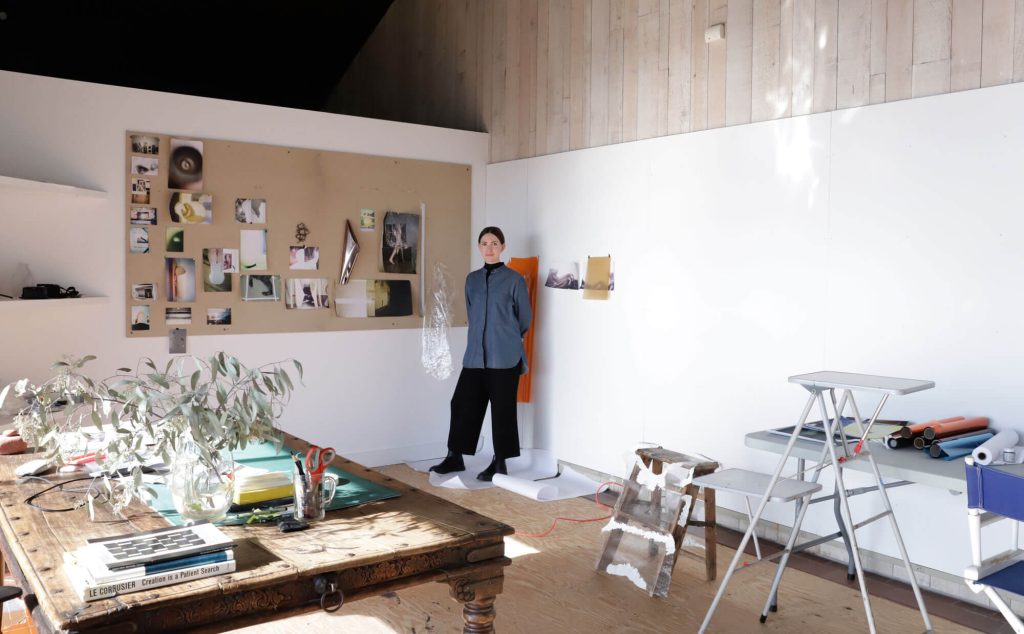
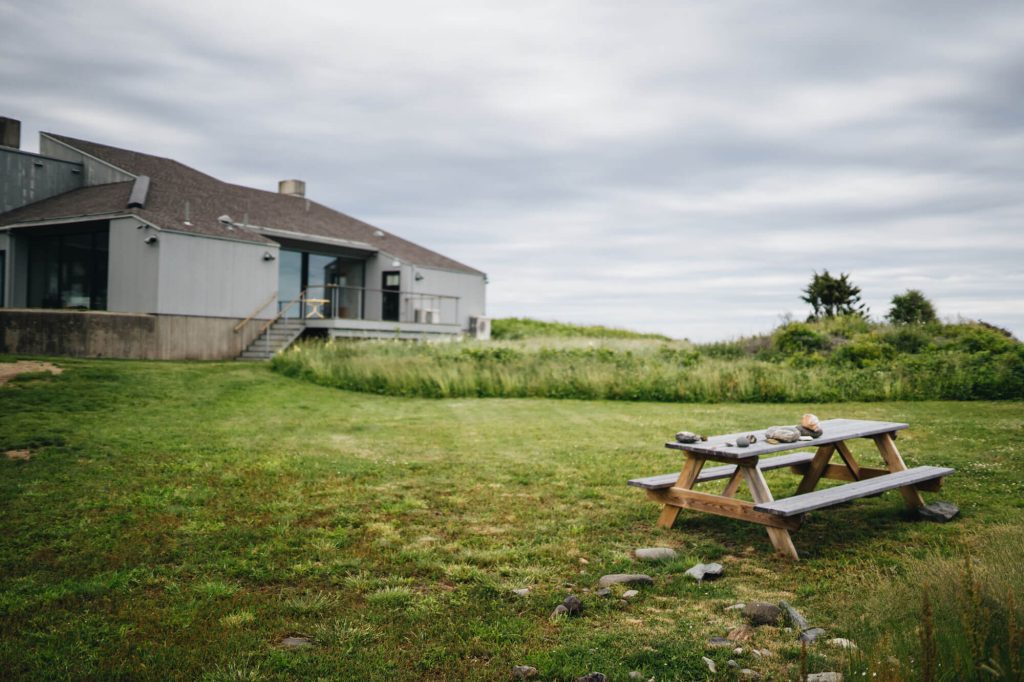
“People come in here and they feel like it’s a home,” says Yael. “That feeling of home also creates a different type of group setting. People interact differently compared to other residencies or experiences, where there are a series of studios—you come in and you leave and you don’t live there.”
The sheltered location, part of a 47-acre conservation easement overseen by the York Land Trust, boasts a wealth of forest, marshland, and oceanfront, providing no shortage of natural resources to awaken the senses. “If you go outside, or if you keep the windows open, the sound of the ocean becomes a real presence.” Yael notes.
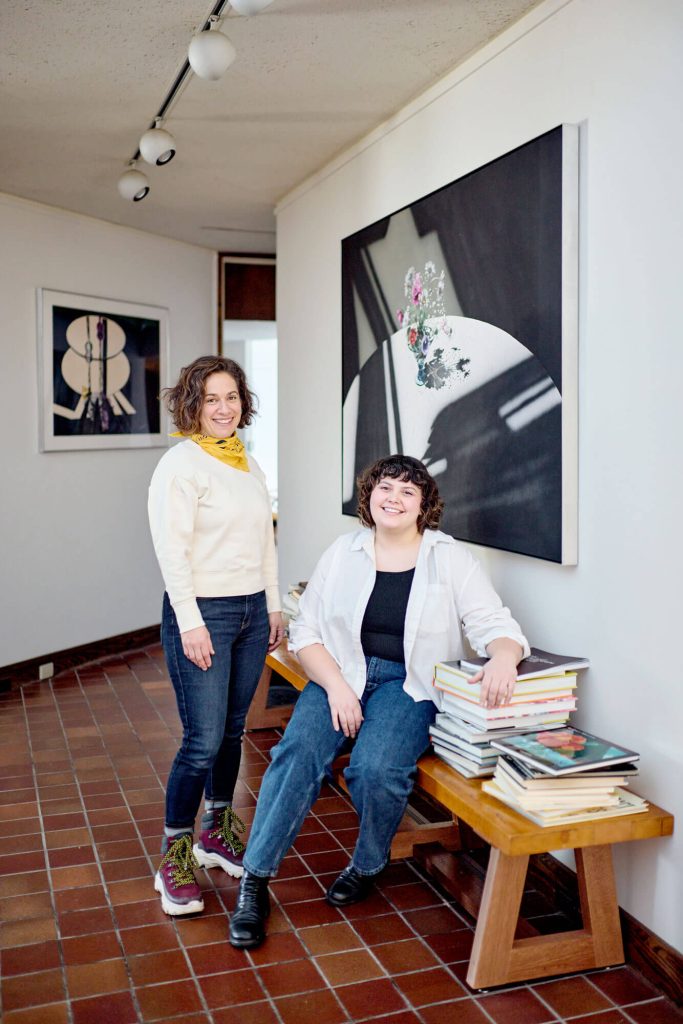
Residencies are awarded through a bi-annual nomination process. The organization hosts three-week stays for visual artists and arts professionals, providing studio space, private rooms, a meal stipend, and an honorarium. While the foundation emphasizes contemplation and creativity over performance or exhibition, they engage with the community through open houses and alumni show their work at the nearby George Marshall Store Gallery.
The property contains Wild Knoll Foundation Garden, an ongoing, alumni-created horticultural project named for the house where author May Sarton lived and wrote for 22 years. At the site of the now-demolished dwelling, “rooms of flowers” inspired by Sarton’s writing comprise a commemorative garden that residents may use for meditation, rumination, and inspiration.
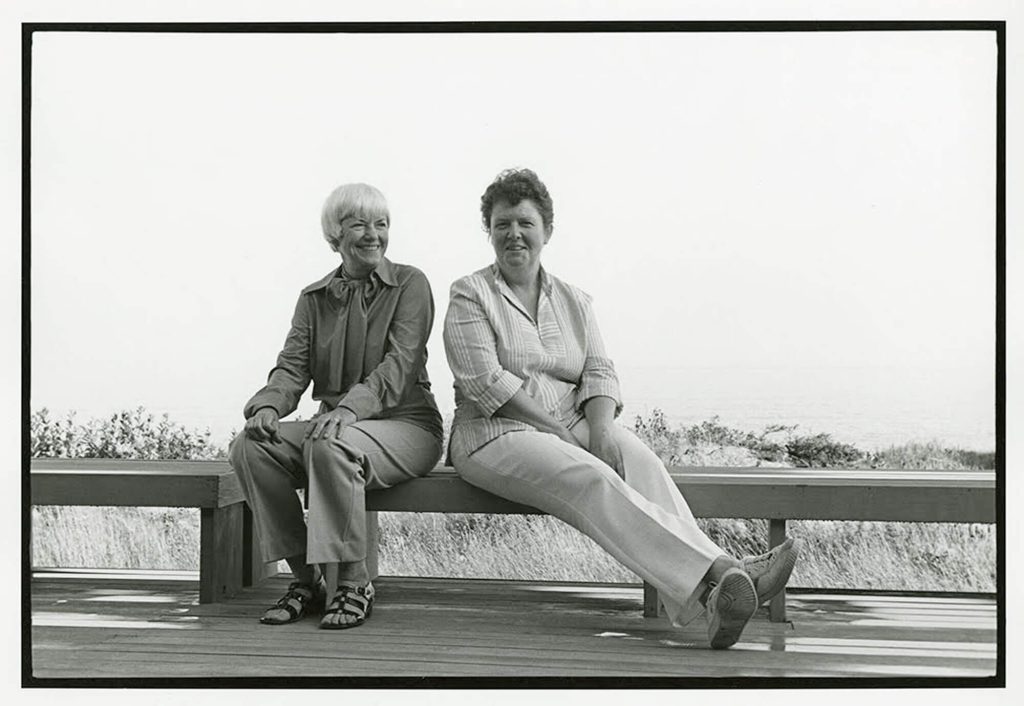
“Another thing that makes Surf Point distinctive is having this history,” Yael continues. “There are really so many wonderful residencies, but when you’re building on a history, it’s just so intentional. Somebody who was in the studio talked about how it’s like holding hands with the past.”
In the kitchen, residents Karen Gelardi, an artist from South Portland, Boston-based artist Ja’Hari Ortega, and curator Aurora Tang from Los Angeles gather for lunch. As they prepare Caprese sandwiches, they marvel at the gift of this respite, the opportunity to create and connect with their work, with each other, and the nature that surrounds them.
Yael smiles as she recalls a common refrain of past participants. “Every group says, ‘How did you know that we all belong together? How did you figure this out?’ And every time, we’re like: ‘You’re doing this. You’re creating this magic.’ ▪
